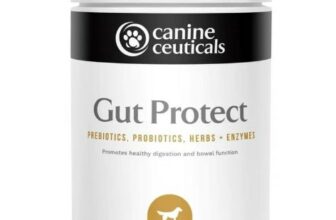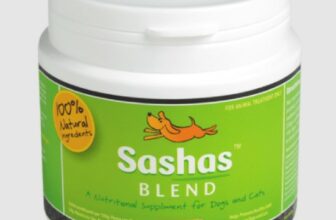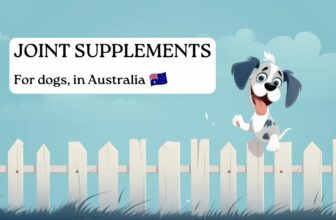
Most pet owners get prescribed an expensive probiotic when their pet starts getting diarrhea or flatulence. This is probably why you’re here, reading this review.
Purina FortiFlora, by Nestle, is allegedly the #1 Probiotic brand recommended by veterinarians. This statistic is according to a Kantar Veterinary Tracker, but how that statistic is determined I have no idea, and it doesn’t necessarily mean it’s the best probiotic for your pet.
Some vets recommend a better diet for your pet over an expensive probiotic supplement. You should consider that too, as otherwise you’re not addressing the real cause of your pet’s gut issues
Purina Australia state on their website “GI conditions, such as diarrhoea and flatulence are often associated with an imbalance in the intestinal microflora.”
I would say “GI conditions, such as diarrhoea and flatulence are often associated with a bad diet.” That’s based on my experience.
Let’s take a look at Purina FortiFlora probiotic for both dogs and cats. Note there’s a page on probiotics for dogs on which Big Dog and Petz Park probiotics might be good brands to compare with.
Purina FortiFlora Review
What the marketing says
The marketing says “proprietary microencapsulation process for enhanced stability”.
Don’t worry, that didn’t mean much to me either. Purina love clever sounding marketing terms which mean very little to us lowly consumers.
The other two benefits listed for FortiFlora are it “increases levels of beneficial bacteria”, and just like a change in diet would do, it also “helps reduce flatulence”.
It has to be said Purina FortiFlora may benefit your dog, and benefit you as well if they keep farting, so next we’ll take a look at the ingredients so see if we can find out the real benefits.
What the ingredients really say
The first ingredient is liver flavour.
So not real liver?
Something which mimics the taste of liver by whatever natural or artificial means? Nestle Purina’s secret liver recipe perhaps?
That’s the big question in my mind, especially as this is the first and main ingredient – What really is liver flavour in this probiotic supplement? If you’re wondering that too then I may have the answer, so keep reading.
The second ingredient is dried enterococcus faecium fermentation product, which is the real probiotic. It’s commonly used in probiotic supplements and some truly premium pet foods. Enterococcus faecium is a type of “good” bacteria which can help balance the gut microbiota (all the little microorganisms in the digestive system), or in simpler terms settle the gut.
While giving enterococcus faecium to your pet may improve their symptoms, are you actually fixing the issue? I consider it somewhat of a cosmetic coverup if you’re not addressing the cause of the gut issues in the first place, which is most often bad diet – so please keep that in mind.
The third ingredient is L-ascorbyl-2-polyphosphate, which to you and I is Vitamin C. It’s used in pet products as it offers a slow-release of Vitamin C, and has a number of benefits – immune support being a key benefit, but also prevention of damage from free radicals, and maintenance of healthy skin, joints, and tissues.
I’ll include the full list of ingredients below, but summarise by saying your dog or cat will likely benefit from Purina FortiFlora if they’re showing symptoms of GI problems. Whether it’s the best probiotic option for your pet I’ll let you decide.
So, what is liver flavour?
I stumbled upon a different set of ingredients from those currently listed on the Purina Australia website. I expect these were how the ingredients were listed previously before being rewritten to sound better.
In those ingredients Animal digest is listed instead of liver flavour, an ingredient which has got a bad rap with consumers who’ve become more knowledgeable in our era of the Internet and an abundance of information.
Animal digest is a broth from cooking animal parts in a big vat (known as rendering). The quality of that digest really depends on what goes into the vat, which in terms of pet food isn’t usually very pleasant to our ears. This could be chicken carcasses, off-cuts, leftovers from human food production, or worse, but as there may be some liver in there it seems it can now be referred to as “liver flavour”.
With that in mind, what sounds better to you, even if they’re the same thing? Animal digest or liver flavour?
Where to buy
Purina FortiFlora Canine
Purina FortiFlora Feline
Ingredients of Purina FortiFlora
Purina FortiFlora Canine ingredients:
Liver flavour, dried enterococcus faecium fermentation product, L-ascorbyl-2-polyphosphate (Vitamin C), brewers dried yeast, Vitamin E supplement, zinc proteinate, beta-Carotene, salt, manganese proteinate, ferrous sulfate, copper proteinate, calcium iodate, sodium selenite.
Purina FortiFlora Feline ingredients are the same as above.






